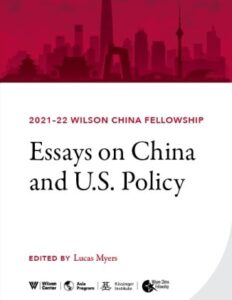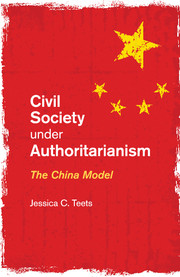 It’s time to strategically reframe civil society programs in China, substituting “democracy promotion” rhetoric with substantive, non-ideological language such as “civic engagement” and “capacity bridging,” according to a new analysis.
It’s time to strategically reframe civil society programs in China, substituting “democracy promotion” rhetoric with substantive, non-ideological language such as “civic engagement” and “capacity bridging,” according to a new analysis.
Since Xi Jinping took power in 2012, advocacy-oriented civil society—those that press for rights associated with liberal democracies—in China has been placed under immense pressure, notes Diana Fu, Associate Professor of Political Science at the University of Toronto. She assesses whether rights advocacy civil society in China is effectively “dead” under the Xi Administration (2012-2022) and if and where opportunities still exist for people-to-people exchange.
The key to analyzing the party-state’s response to advocacy civil society is to disaggregate two facets of threat: mobilizational and ideological, Fu writes in Is Rights Advocacy Civil Society in China Dead?, an essay for the Wilson Center:
- The former refers to civil society’s potential to threaten social stability through collective action while the latter refers to their ideas and values that threaten orthodoxy. In both Mainland China and in Hong Kong, rights advocacy organizations and networks have been amputated, but they are not “dead” in the sense of being permanently demolished.
- At the same time, the party-state has been actively re-molding educational and cultural institutions to ensure that the future generation of youth—a key pillar of civil society will be pro-CCP in their ideologies.
 The regime’s response to popular unrest in Hong Kong and elsewhere was to claim that external actors like the National Endowment for Democracy (NED) and USAID were fomenting ‘color revolutions‘, Fu observes*, prompting the Xi administration to adopt a three-pronged approach to governing civil society in Mainland China that consisted of
The regime’s response to popular unrest in Hong Kong and elsewhere was to claim that external actors like the National Endowment for Democracy (NED) and USAID were fomenting ‘color revolutions‘, Fu observes*, prompting the Xi administration to adopt a three-pronged approach to governing civil society in Mainland China that consisted of
- cracking down on rights-advocacy organizations predicated upon “Western values” of individual rights;
- expanding regulatory control over domestic organizations; and
- deepening party control over all civil society groups.
Despite recent developments, key issue-areas, actors, and institutions remain through which U.S. policymakers, U.S. civil society, and educational institutions can continue to engage with Chinese counterparts, Fu adds, making several recommendations to that end:
- Foster a policy environment where civil society dialogue is actively encouraged as Track 2 diplomacy. Start with re-booting educational exchange programs with China such as the Fulbright Program and the Peace Corps.
- Hold congressional hearings on the status and development of civil society in Mainland China and in Hong Kong via the Congressional Executive Commission on China (CECC – below).
- Create an exit option for Hong Kong activists to seek accelerated asylum the United States.
- Support and dialogue with civil society activists from Mainland China residing in the diaspora community in the United States; expand funding and support for independent Chinese media outlets reaching the Chinese diaspora.
- U.S. foundations and philanthropic organizations should support and fund programs that facilitate youth-led exchange from Mainland China and Hong Kong to the United States and vice versa.
- Continue to share best practices among the donor community about adaptive strategies in authoritarian states as well as encourage best practices sharing between Chinese civil society organizations and INGOs. RTWT
*Citing the Journal of Democracy’s 2009 discussion, “Debating the Color Revolutions.”







